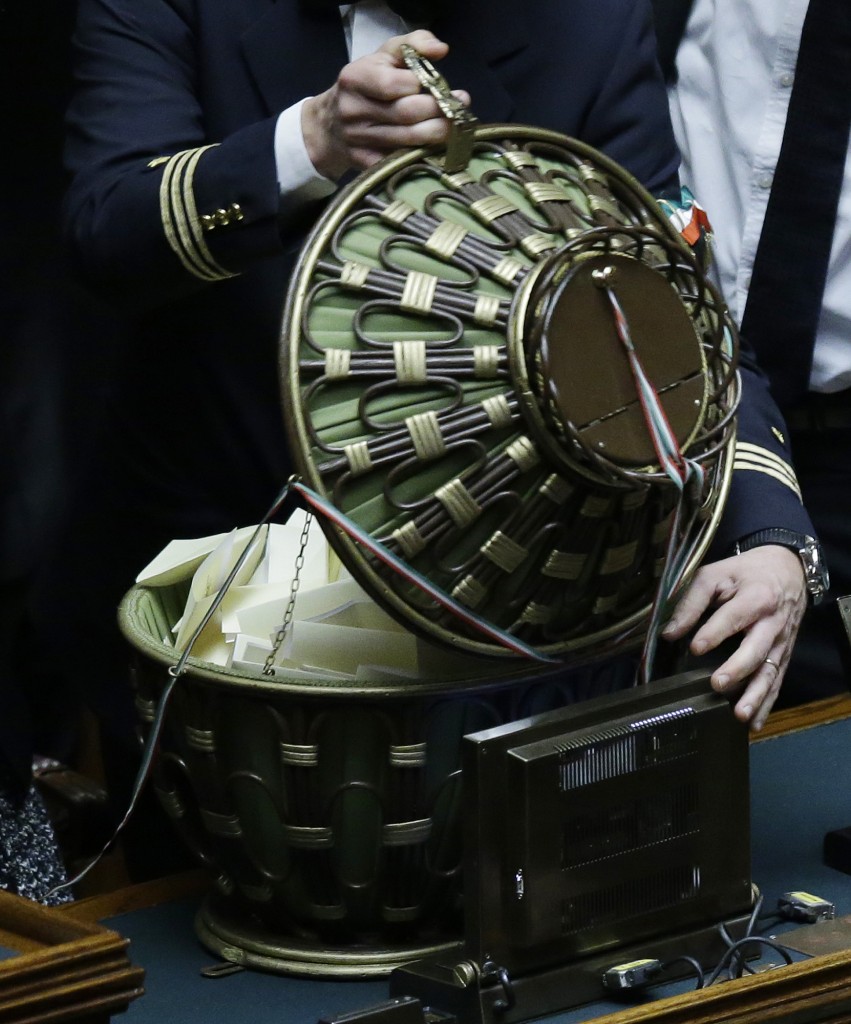
This week my colleagues and I have focused our attention on several elegant brown and gold wicker baskets, with green satin cloth on the inside, and Italian tri-color ribbons and delicate locks and chains on the outside. Into these baskets, 1009 Italian electors – mostly members of parliament—have been placing their ballots for the Italian President. We spent our time trying to understand what was going into those baskets – blank ballots, bizarre names or serious candidates—and what was all the scheming and intriguing going on around those baskets.
The elaborate process appeared to many of us in the foreign press to be more like a Conclave, a Papal Election, than the election of a modern-day president. The difference being that a Conclave is held in secrecy behind closed doors and the election of an Italian President is done in the parliament with members of parliament crowding around the voting booths – chatting, tweeting, gossiping, taking selfies, then zipping out to the renowned Parliamentary coffee bar (the best cappuccino in Rome supposedly) and what is known as the Transatlantic corridor to strategize some more. In between all this scheming and strategizing, they frequently give interviews to TV broadcasters and reveal all sorts of plans to vote for this person or that person or to leave their ballots blank.
This leaves the journalists doing some convoluted reasoning trying to figure out what is going on and often using poker metaphors to explain it. Italian Premier Matteo Renzi was “playing his cards close to his chest” until the last minute when, shortly before the first round of voting was to begin, he revealed his “ace” choice of Sergio Mattarella (more on Mattarella shortly), opposition leader Silvio Berlusconi was against Mattarella, but was Renzi just “bluffing” and had they actually agreed on another candidate?
In Italy the Prime Minister has most of the political power, but the President of the Republic is an influential figurehead who has the power to dissolve parliament and call for elections. He is a guarantor of the constitution and presides over the nation’s military.
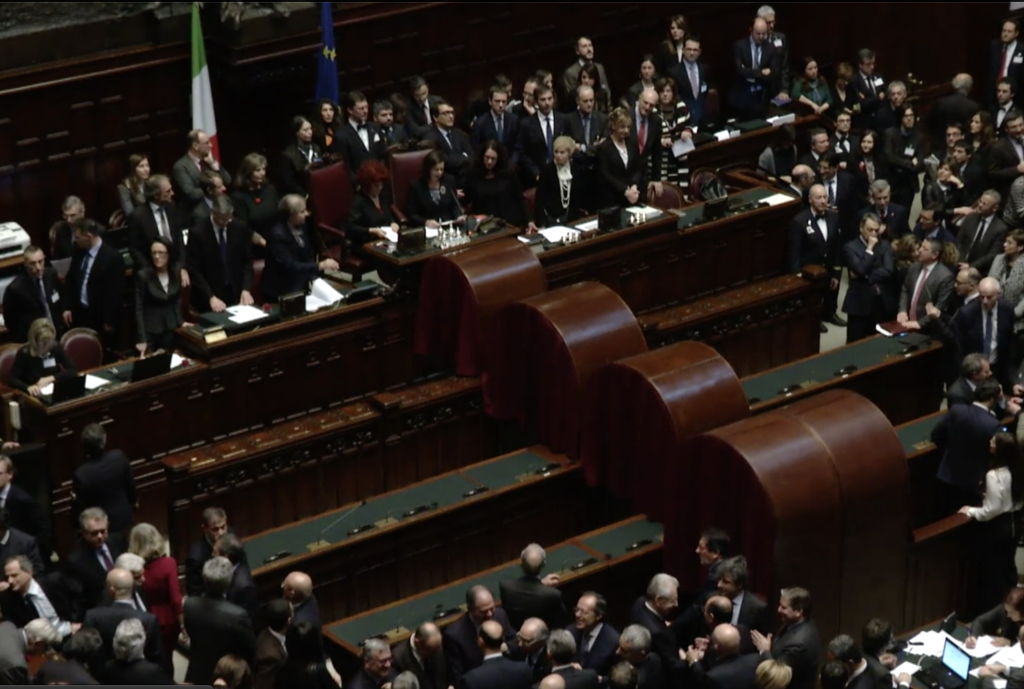
As the voting went on in the parliament, electors were called by name and they stepped up to walk through a temporary voting booth made up of curved leather chambers with red velvet curtains. The Members of Parliament would pass through the booth then slip their ballot into the basket.
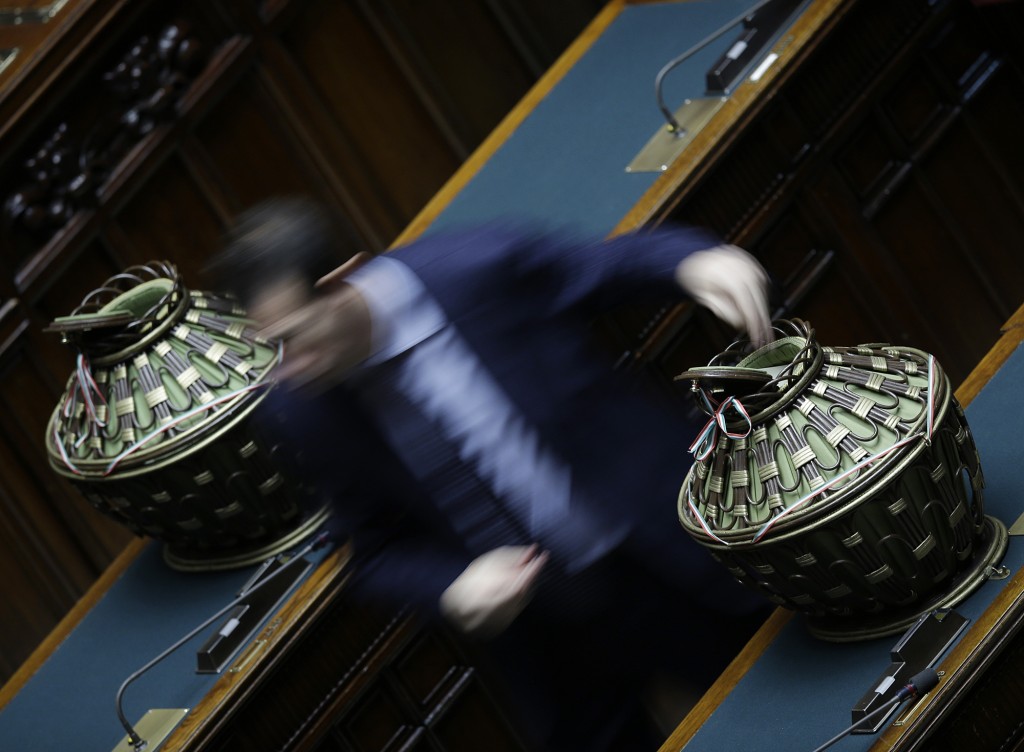
At the end of each round of voting a long line of officials looked at the ballots, the president of the parliament read each name out loud and the votes were registered. Under the voting rules this process is carried out for three rounds and no one can win unless there is a two-thirds majority, in the fourth round it slips to an absolute majority.
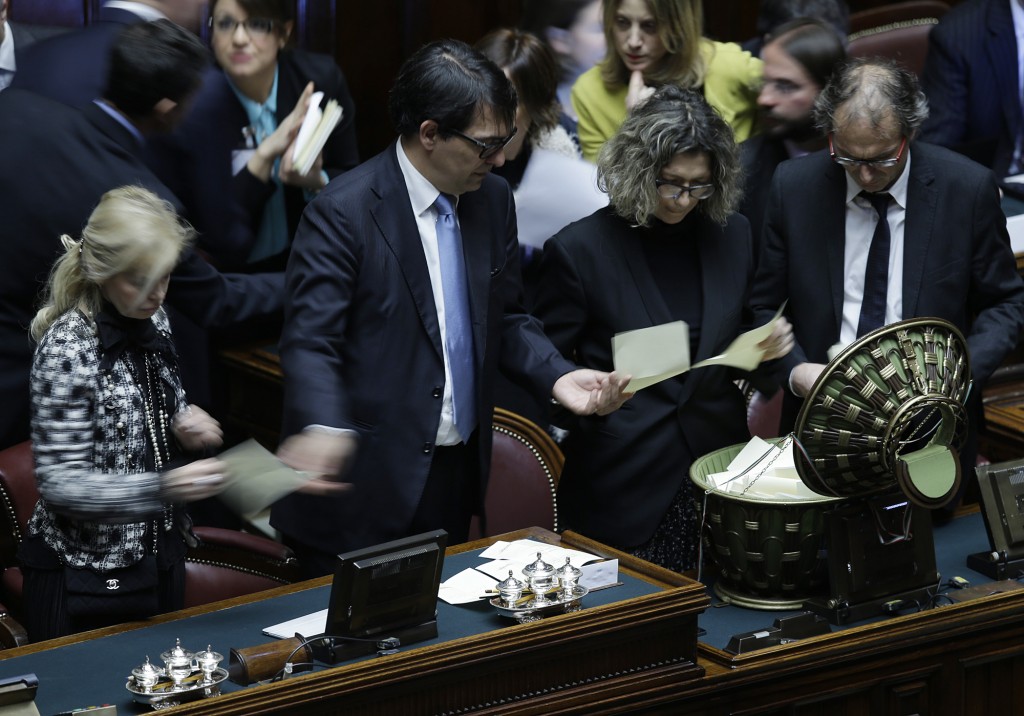
I was asked during this process by Italian TVs and radios how much the US cares about the election and why we were covering. I explained that the majority of Americans have no idea who the Italian president is and what he does. That said, the US government has a big interest in the election. It is well known that the Obama administration believed that the former President of the Republic 89-year-old Giorgio Napolitano, who resigned in January, was key to maintaining the stability of Italy over the last nine years as the country struggled with economic decline and political turmoil. Over the years, US Presidents have frequently met with and consulted Italian Presidents – a quick glance at US government archives shows that President Dwight Eisenhower met with President Gronchi in Rome in 1959, Presidenet Kennedy met with President Segni in 1963 and so on up to President Obama’s visits with President Napolitano.
And finally, here is my buried lead:
Saturday, during the fourth round of voting the electors chose 73-year-old Constitutional Judge Sergio Mattarella to be the next President of the Italian Republic. Mattarella undoubtedly is a qualified, and capable choice.
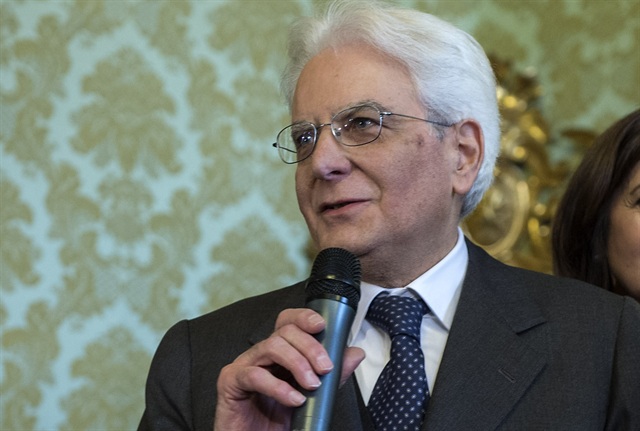
He is Sicilian, from the island’s main city of Palermo. As Italian Prime Minister Matteo Renzi pointed out when announcing Mattarella as his choice, Mattarella’s older brother Piersanti was assassinated by the Mafia in 1980 when he was president of the region of Sicily. A grim picture this week in one daily newspaper showed Sergio Mattarella pulling his brother out of his car after he had been shot.
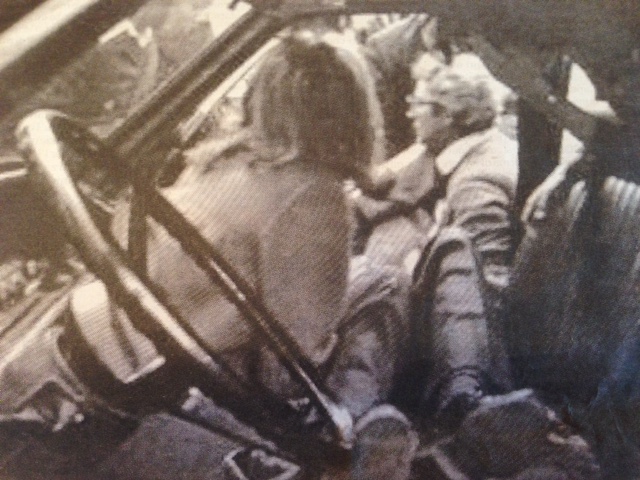
Since then Sergio Mattarella has been one of Italy’s most hard-working yet discreet Italian politicians. He was elected to parliament in 1983, became Minister of Instruction in 1989, Vice-Premier in 1998, Minister of Defense in 1999 and nominated in 2011 to become a Judge on Italy’s Constitutional Court. Throughout this time he flew well below the public radar. Unlike most Italian politicians (and many politicians everywhere) he doesn’t seem to be attracted to TV cameras, he is laconic, not loquacious. He does not have a twitter account and clearly prefers not to “appear”. When his name first emerged my colleagues and I rushed to find some file footage of him and what we came up with was a single shot of him with Queen Elizabeth II, back in 1999 when he was Minister of Defense, walking down the steps of “Il Vittoriano” the large white monument in the center of Rome with Italy’s “Tomb of the Unknown Soldier”.
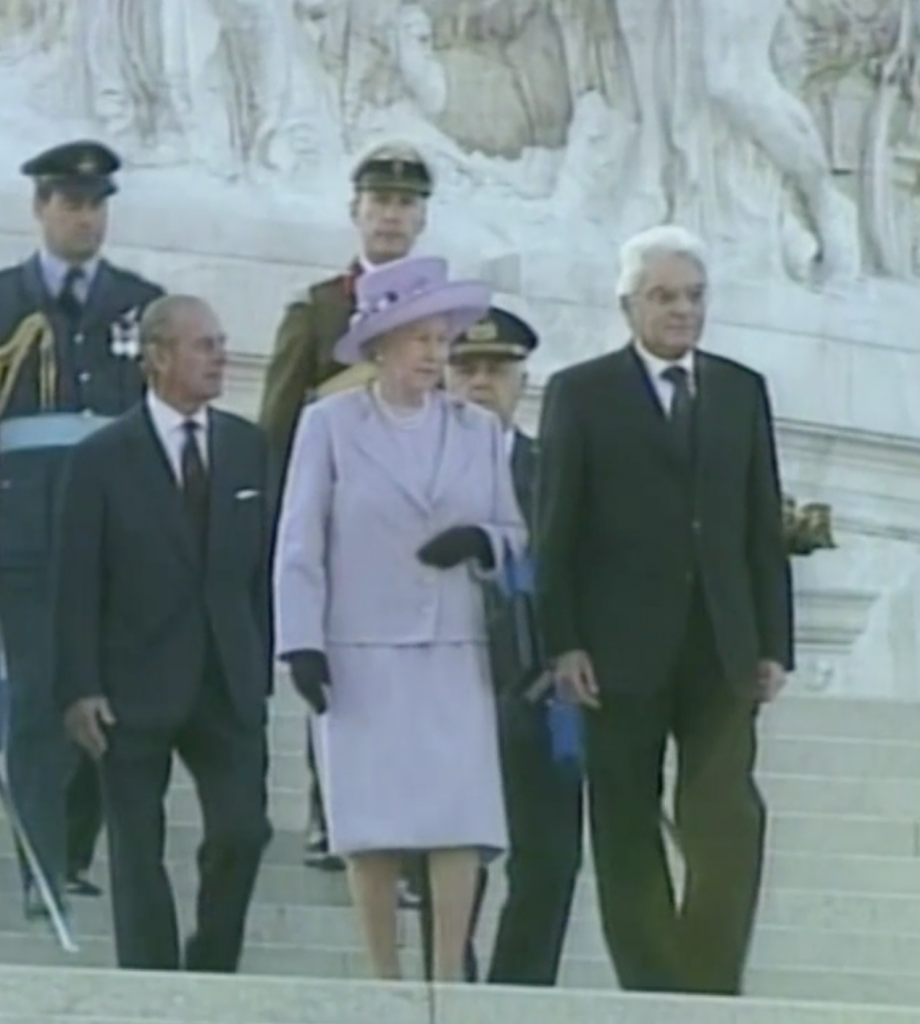
Following his election yesterday, President Mattarella emerged to accept. He was impeccably dressed in a grey suit with a blue tie, a full head of white hair and pieicing blue eyes, and with his austere manner he said simply: “My thoughts go, above all, to the difficulties and hopes of our fellow citizens, and that’s enough.”

On Tuesday, President Mattarella will move to the Quirinale Palace formerly home to Popes and Kings and now the residence of the Italian President.
The Quirinale Palace, is a vast dwelling with 1200 rooms packed with precious tapestries, paintings, antique furniture, clocks, rugs, collections of porcelain and sculptures. The Palace surrounds an extensive interior garden with palm trees, fountains, flowers, and pruned hedges forming labyrinths. There are hundreds of people on the presidential staff, the most symbolic being the honor guard known as the Corrazziere who must be very tall, wear elegant uniforms with helmets with long horse tails hanging off the back and ride horses in ceremonies inside the Quirinale courtyard.
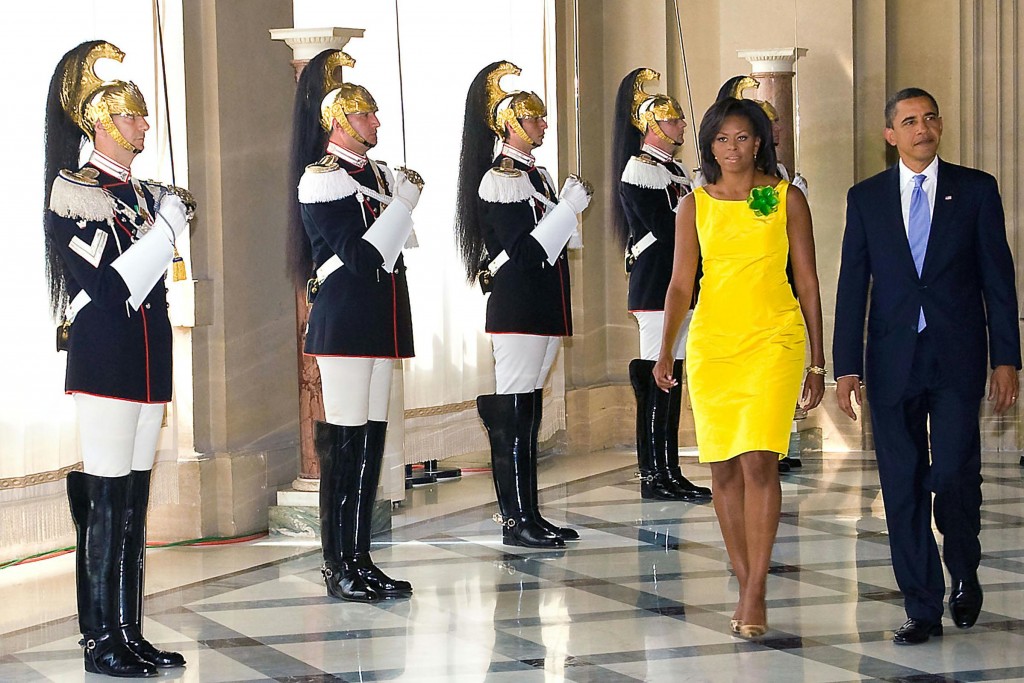
In addition to the Palace, the President of the Italian Republic can use the former hunting grounds of the Kings, a huge park and nature reserve called Castelporziano, which is roughly 60 square kilometers including about 3 kilometers of beachfront near Rome. And if all that is not enough, the Presidential property also includes the Villa Rosebery an elegant residence near Naples with its own beachfront.
It is hard for an American not to make a quick comparison to the residence of our President. The White House has 132 rooms.
(A little aside here. Some Italians bristle at the luxury of the Presidential accommodations and the enormous expense – widely quoted in the Italian press to cost the Italian taxpayer far more than Buckingham Palace. Other Italians have told me that they think it is important to maintain the elegance of the Quirinale for “Rappresentanza”. Directly translated that would be “representation” but it is a concept that goes hand in hand with the “bella figura”. Romans often have a room in their home for “rappresentanza” which would be an elegant living room for receiving people. Usually it is far from the kitchen, which is often a tiny room at the other end of the apartment. Although food is given huge emphasis in Italian society, kitchens are often small and hidden away and only now are Italians showing interest in an American style open area with a kitchen and living room together. )
Aldo Cazzullo, a prominent Italian journalist, author and political analyst tweeted shortly after the election of Mattarella, “If Mattarella is so sober, and if the Quirinale costs more than Buckingham Palace, it wouldn’t be a bad idea, said with respect, that it could become an Italian Louvre, with a President who works in his wing or in another building.”

Trisha – Thanks for filling us in on Mattarella. I had heard he was elected, but knew nothing about him. From your account, he sounds like a good successor to Napolitano. But those baskets seem so odd as a receptacle for votes. I wonder who designed them? They seem more suited for a boutique on a chic shopping street. As for the Quirinale, it is truly a grandiose palace and fortunately for us tourists, open for public viewing. One time I was there for one of the Sunday concerts following a tour and actually got to shake Napolitano’s hand, when he and his wife came in from their private quarters to attend the concert. I don’t imagine that Villa Rosebery or the grounds at Castelporziano are open to the public, are they? Once again, thanks for keeping us informed of goings on in Rome. Hope to see you there in April.
Wow Linda, that is neat that you got to visit the Quirinale and shake Napolitano’s hand. I have only been inside the Quirinale for news events, but I must to the tour some day. Glad I was able to give some useful background on Mattarella. Looking forward to seeing you when you are next in Rome.
And yes, I thought the same thing, those baskets do look like some high fashion garment designed by Gucci or Fendi.
. . as governments come and governments go i am left wondering why italians bother with them at all – they seem to do very well without them.
I think many Italians feel the same way– certainly they burn through their Prime Minister’s awfully quickly. I was asked on a radio program the other night if I thought Mattarella could make a difference in pulling this country out of its economic crisis. I don’t think it is up to him. I think it is up to so many amazing Italians I meet or see everyday. One of them — that I mentioned on the radio show is Samantha Cristoforetti– Italy’s first woman astronaut who is current up in orbit in the International Space Station. One super lady! (must do a blog post on her)
He seems like a wise man of few words.
That is an excellent description.
I loved this post, I learned something new in every line! And the final paragraph, with the idea of making this magnificent building into an Italian Louvre, strikes me as a great idea, with a small portion for Presidential Offices. The process of electing this man, whom it seems is the conscience of Italy, is an interesting one. I wonder what began the tradition of using baskets, and why they are still precious (Americans, of course, use ballot ‘machines, metal, imposing and impregnable, into which a handwritten ballot is deposited via a slot. And in the cities the whole shebang is in a machine. We obviously like machines).
Mostly, though, the job description of supervisor of the military strikes me as poignant, since Italy’s saddest chapter was when a General, Mussolini, had no supervisor and ran the whole country.
God bless this fine man, who knows how to oppose corruption – may he succeed.
Thank you Nancy — a fascinating comment as always. Yes, in the US, we like machines, efficiency and transparency. In Italy they like a beautiful — high-fashion apprearing container, byzantine election rules, and lots of room for scheming and lack of transparency. It is just the Italian way. I have to say that Italy’s military has been transformed into something positive since the years of Mussolini. I have been so impressed with how their Navy has saved so many migrants from the Mediterranean Sea while the rest of Europe seemed to want to let their boats sink. The Italian military is also involved in a lot of peace-keeping missions abroad. Mattarella was sworn in today and again he spoke about the importance of fighting corruption — let’s hope he succeeds.
A couple of years ago, walking past the Quirinale, I saw someone walking a West Highland Terrier (same breed as my dog) in a gated alley behind the palace and always wondered whose pooch it was.